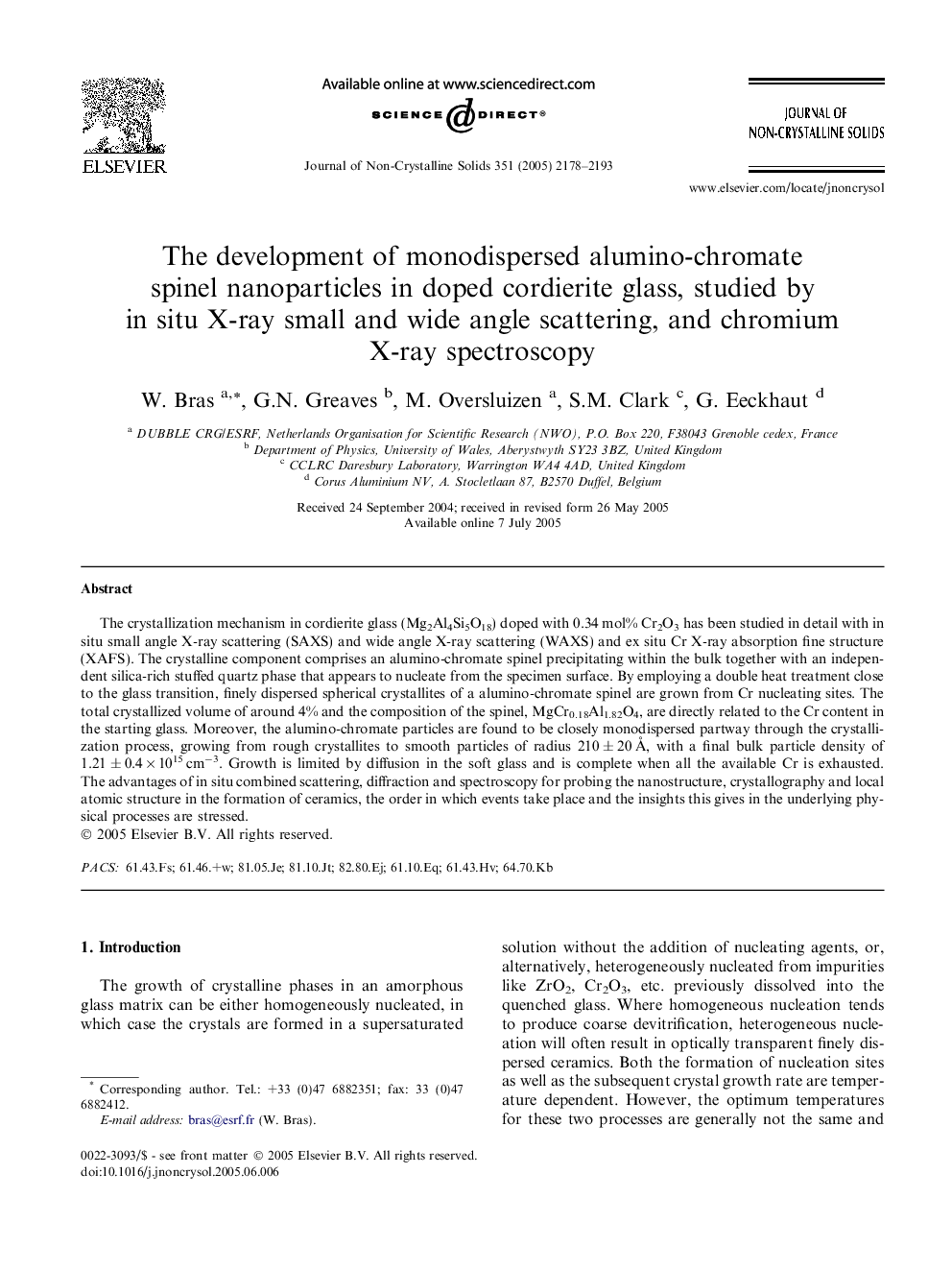| Article ID | Journal | Published Year | Pages | File Type |
|---|---|---|---|---|
| 1484377 | Journal of Non-Crystalline Solids | 2005 | 16 Pages |
The crystallization mechanism in cordierite glass (Mg2Al4Si5O18) doped with 0.34 mol% Cr2O3 has been studied in detail with in situ small angle X-ray scattering (SAXS) and wide angle X-ray scattering (WAXS) and ex situ Cr X-ray absorption fine structure (XAFS). The crystalline component comprises an alumino-chromate spinel precipitating within the bulk together with an independent silica-rich stuffed quartz phase that appears to nucleate from the specimen surface. By employing a double heat treatment close to the glass transition, finely dispersed spherical crystallites of a alumino-chromate spinel are grown from Cr nucleating sites. The total crystallized volume of around 4% and the composition of the spinel, MgCr0.18Al1.82O4, are directly related to the Cr content in the starting glass. Moreover, the alumino-chromate particles are found to be closely monodispersed partway through the crystallization process, growing from rough crystallites to smooth particles of radius 210 ± 20 Å, with a final bulk particle density of 1.21 ± 0.4 × 1015 cm−3. Growth is limited by diffusion in the soft glass and is complete when all the available Cr is exhausted. The advantages of in situ combined scattering, diffraction and spectroscopy for probing the nanostructure, crystallography and local atomic structure in the formation of ceramics, the order in which events take place and the insights this gives in the underlying physical processes are stressed.
